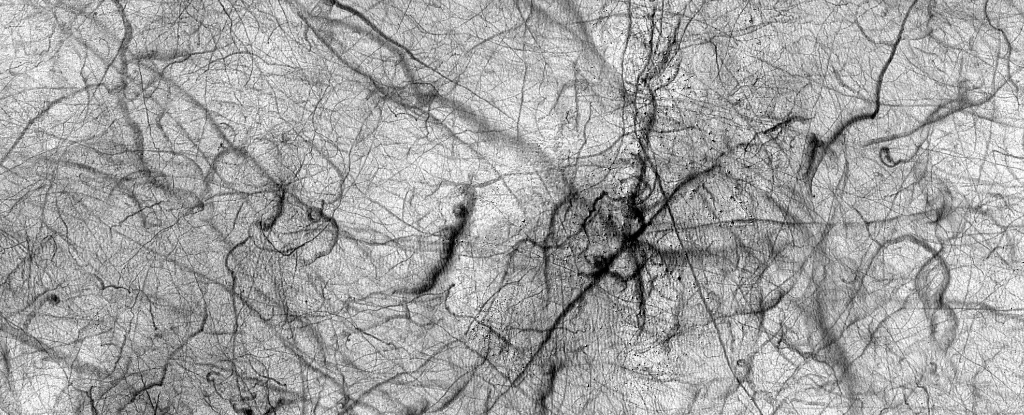Mars has always captivated the imaginations of astronomers and the general public alike, not only for its distinctive reddish hue but also for its dynamic atmospheric phenomena. Among the most intriguing of these phenomena are the dust devils that sweep across the Martian surface. An arresting image captured by NASA’s Mars Reconnaissance Orbiter (MRO) using its High-Resolution Imaging Science Experiment (HiRISE) camera sheds light on these swirling marvels. This article seeks to analyze the significance of dust devils on Mars, the underlying mechanisms leading to their formation, and the implications for future exploration of the planet.
Recently, scientists released an awe-inspiring image of dust devils in action, particularly illustrating the Haldane Crater on Mars. These tornado-like structures are not only visually captivating but are also vital for scientific research. Dust devils form as a result of localized heating on the Martian surface, where solar radiation warms the ground, causing the air to rise rapidly. This upward movement generates a vortex, which rotates and picks up dust and tiny particles along the way. Although they may appear harmless, these whirlwinds play a crucial role in Martian geology and weather dynamics.
Their existence serves as a reminder of Mars’ vibrant—and somewhat tumultuous—atmospheric processes. Scientists utilize images like that of the dust devils to assess the distribution and accumulation of dust particles, which have implications for understanding the planet’s climate and surface conditions. By tracking the fading trails left by these whirlwinds, researchers can quantify how much dust is deposited over time—information critical for future missions and potential colonization efforts.
To appreciate the significance of dust devils on Mars, one must first understand the planet’s atmospheric and climatic context. With an atmosphere comprised of approximately 95% carbon dioxide, Mars boasts a surface pressure that is merely 1% of Earth’s. Coupled with average temperatures plummeting to around -60 °C, the environmental conditions create a stark contrast to our home planet, making survival unfeasible without advanced life-support systems.
The Martian climate, characterized as cold and dry, is particularly conducive to the formation of dust particles. Its surface is littered with features such as sprawling plains, enormous volcanoes like Olympus Mons, and the expansive Valles Marineris canyon system. Geological studies indicate that Mars may have once harbored liquid water, raising tantalizing possibilities about the history of life on the planet. Understanding how dust devils fit into this narrative adds another piece to the complex puzzle of Martian history.
Dust devils act as both benefactors and adversaries to the equipment that humanity sends to Mars. On one hand, their ability to clear dust from solar panels is a blessing for exploratory rovers and landers reliant on sunlight for power. The winds generated by these dust devils can scrub panels clean, enhancing their efficiency and prolonging mission lifespans. Conversely, the very same phenomena can create challenges by depositing dust and obstructing solar access, diminishing power output.
This duality underscores the complex interaction between Martian weather patterns and human technology. Understanding how dust devils operate offers invaluable insights for engineers tasked with developing systems that can withstand and thrive in such harsh environments, ensuring the success of long-term missions on the Red Planet.
As we look toward the future, the implications of understanding dust devils extend beyond mere scientific curiosity. The ongoing study of these atmospheric phenomena is becoming increasingly pertinent as humanity prepares for more advanced explorations and potential colonization of Mars. Understanding dust accumulation rates and the role of dust devils in shaping the planet’s surface can assist in designing more effective equipment and habitats that can withstand the forces at play in the Martian atmosphere.
Mars remains a planet of wonders, and dust devils exemplify the dynamic systems at work on its surface. Through continued exploration and analysis, scientists can unravel the mysteries of this captivating world, providing essential data that will aid future missions aimed at unlocking the secrets of our neighboring planet. The image captured by the MRO is not just a snapshot of swirling dust; it is a window into the complexity and grandeur of Mars, calling on humanity to reach for the stars.

Leave a Reply